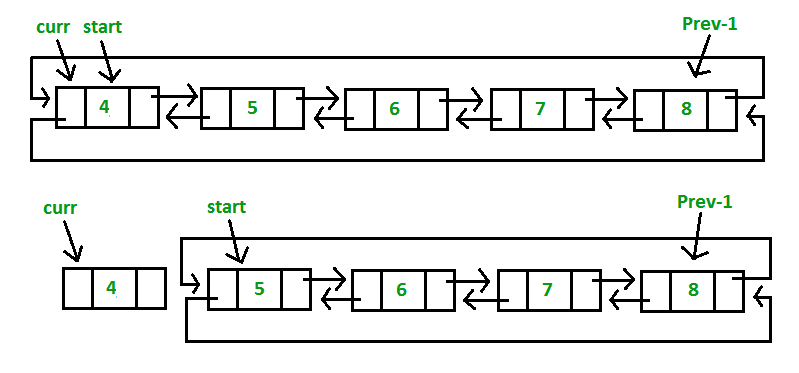


It is a combination to two Data Structures namely Circular Linked List and Doubly Linked List. Nodes are traversed quickly from the first to the last.In this article, we have explored Circular Doubly Linked List and operations that can be performed on it.Any node can be set as the starting point.A node always points to another node, so NULL assignment is not necessary.These applications are iterated over by the OS. A circular linked list can be used to organize multiple running applications on an operating system.Multiplayer games use this to give each player a chance to play.It is harder to find the end of the list and control the loop.
#Circular linked list code
It is possible for the code to go into an infinite loop if it is not handled carefully.Reversing a circular list is more complicated than singly or doubly reversing a circular list.Compared to singly linked lists, circular lists are more complex.Circular Doubly Linked Lists are used for the implementation of advanced data structures like the Fibonacci Heap.It is convenient for the operating system to use a circular list so that when it reaches the end of the list it can cycle around to the front of the list. For example, when multiple applications are running on a PC, it is common for the operating system to put the running applications on a list and then cycle through them, giving each of them a slice of time to execute, and then making them wait while the CPU is given to another application. Circular lists are useful in applications to repeatedly go around the list.If the node to be deleted is neither the first node nor the last node, then set prev -> next = curr -> next and delete curr.īelow is the implementation for the above approach:.Set prev -> next = head and delete the node curr by free(curr). Condition to check this is (curr -> next = head). If curr is not the first node, we check if it is the last node in the list.After prev reaches the last node, set head = head -> next and prev -> next = head. If yes, then move prev until it reaches the last node.

If the list has more than one node, check if it is the first node of the list.If the node is found, check if it is the only node in the list.Traverse the list using curr to find the node to be deleted and before moving to curr to the next node, every time set prev = curr.If the list is not empty then we define two pointers curr and prev and initialize the pointer curr with the head node.If the list is empty we will simply return.Keep the address of the node next to the last node in tempģ) D elete any node from the circular linked list: We will be given a node and our task is to delete that node from the circular linked list.Locate the node before the last node (let it be temp).Nodes are traversed quickly from the first to the last. The last value should be NULLA node always points to another node, so NULL assignment is not necessary.Īny node can be set as the starting point.Deletion in a circular linked list:ġ) Delete the node only if it is the only node in the circular linked list: ISRO CS Syllabus for Scientist/Engineer ExamĪuxiliary Space: O(1) 2.ISRO CS Original Papers and Official Keys.GATE CS Original Papers and Official Keys.


 0 kommentar(er)
0 kommentar(er)
